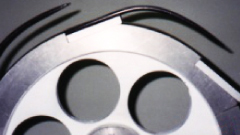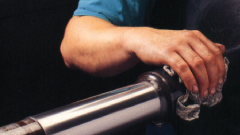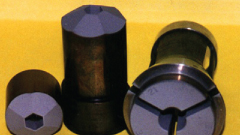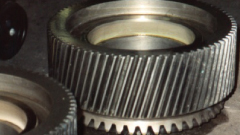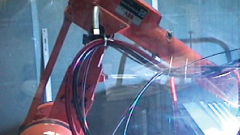WEAR RESISTANT COATINGS
PROTECT AGAINST ABRASION, EROSION, CORROSION, FRETTING/GALLING, CAVITATION, BRINELLING.
REPAIR COATINGS
NO NEED TO SCRAP AN EXPENSIVE PART. REPAIR OR BUILD UP TO A SPECIFIED SIZE. EXTEND PART LIFE.
RELEASE COATINGS
FEATURING DURA-SLIK™ FLUOROPOLYMER COMBINED WITH THERMAL SPRAYED COATING PROVIDES WEAR RESISTANCE ALONG WITH RELEASE PROPERTIES.
THERMAL BARRIER PROTECTION COATINGS
RESISTS TEMPERATURES UP TO 3000° F. ALLOWS THE USE OF LESS EXPENSIVE SUBSTRATE.
LOW COEFFICIENTOF FRICTION COATINGS
COATED COMPONENTS HAVE THE ABILITY TO PERFORM AT HIGHER SPEEDS.
SURFACE TRACTION COATINGS
Long lasting surface finishes that prevent slippage, interruptions & breaks. Improves web tracking and tension control.
BRUSH PLATING
Repair or rebuild to a specified size, tolerance and surface finish. Plate an entire surface or target a small localized area.
GENERAL CAPABILITIES
Services, coating features, part size capability.
Electroless Nickel Plating on Metal Surfaces
The course of action of adding an electroless nickel plating (EN Plating) to a metal surface is definitely an autocatalytic chemical reduction. This means that as an alternative to employing an outside source of electrical energy like in the equivalent electroplating approach, the EN plating approach makes use of a chemical bath to deposit a nickel / phosphorous layer onto the metallic surface. A surface coated in electroless nickel can even be utilized on non-conductive surfaces, enabling for plating of a wider wide variety of base materials. This electroless method considerably improves the object’s resistance to galling and leaves a predictable, uniform nickel coating for high-precision components, which can be applied to both ferrous and non-ferrous surfaces of any geometry intricate shape.
Electroless nickel plating is an auto-catalytic reaction utilized to deposit a coating of nickel on a substrate. Unlike electroplating, it truly is unnecessary to pass an electric current employing the resolution to type a deposit. This plating approach prevents corrosion and wear. EN plating techniques may also be applied to manufacture composite coatings by suspending powder within the bath. EN plating has quite a few benefits compared to electroplating. EN plating is totally free from flux-density and energy supply troubles and provides an even deposit no matter workpiece geometry. Using the suitable pre-plate catalyst, EN plating can deposit on non-conductive surfaces.
Electroless Nickel Plating Thicknesses
EN plating can be deposited for 5 microns per hour, all the way as much as 25 microns per hour. Because it really is a continuous method that builds on itself, the thickness in the coating is primarily limitless. As thickness increases, even so, minute imperfections come to be more apparent.
Help Chemistries for Electroless Nickel Plating
The cornerstone of the EN plating process is a bath consisting of several chemical agents. When these agents are employed in appropriate proportions and replenished regularly, the metal ions adhere uniformly for your element with little or no blistering. The initial additive for the chemical bath could be the metal salt that contains the ions from the alloy you intend to plate your components with. To convert these ions into solids that adhere to your element, you need a decreasing agent. Hydrated sodium hypophosphite is really a popular decreasing agent employed in the EN plating course of action. The level of the minimizing agent present in the chemical bath determines the thickness of the metal coating on the components.
In addition to the metal salt and minimizing agent, your electroless plating bath calls for stabilizers, wetting agents, and surfactants to market adhesion and retain a consistent and perfect pH. Stabilizers help control how nicely the metal ions adhere to your part. To reduce friction, it is possible to add Teflon together with your wetting agent and surfactants. When your chemical bath is frequently monitored for the best temperature and replenished regularly, electroless nickel plating can be an uncomplicated, powerful, and sustainable approach to plate your parts.



